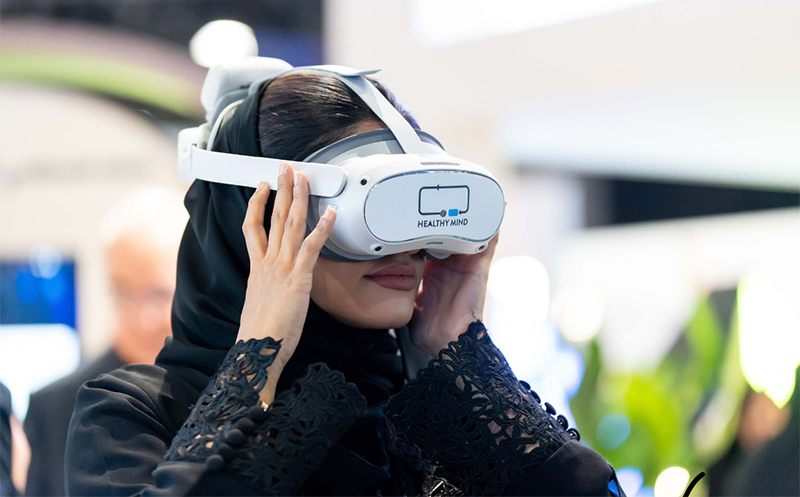AI and wearables are powering a new era in breast cancer care
New AI and imaging technologies are transforming how breast cancer is detected, monitored, and treated, bringing precision, comfort, and hope to millions worldwide.
| 20 October, 2025 | By WHX Tech |
Share on socials
|
October marks breast cancer awareness month. It’s a time for reflection, resilience, and recognising how technology is transforming women’s health. The world over, artificial intelligence and imaging innovations are accelerating detection, improving monitoring, and supporting more precise treatment, giving clinicians and patients renewed hope.
AI as a second pair of eyes
A groundbreaking study published in The Lancet Digital Health from the Netherlands evaluated AI as an independent reader for mammogram screening. Using the Transpara system by ScreenPoint Medical, researchers processed more than 42,000 mammograms to test whether AI could enhance diagnostic accuracy. The findings were striking: pairing one human reader with AI detected more cancers than traditional double readings by two radiologists. Crucially, AI caught invasive cancers missed by humans, which tend to grow faster and be more dangerous by the time they’re eventually detected. The study underscores how AI is not replacing radiologists, but enhancing their precision and speed, particularly amid global workforce shortages.
“AI applied at the population level can help facilitate early diagnosis of disease, improve inefficiencies in care, and empower consumers with the knowledge and tools to achieve better health,” says David Rhew, Global Chief Medical Officer and VP of Healthcare at Microsoft.
At-home imaging through wearables
Meanwhile, at MIT, Professor Canan Dagdeviren’s team is pioneering a wearable ultrasound patch that fits inside a bra. Designed to be painless, portable, and radiation-free, the device uses AI to translate biological signals like tissue changes or heart rate into electrical data, detecting anomalies in subseconds. Continuous wear could allow women to monitor how a tumour evolves over time, making follow-up imaging more personalised and accessible. Clinical trials are underway, with hopes of bringing the innovation to consumers within five years.
This kind of patient-led monitoring may redefine early detection, particularly in regions where screening infrastructure remains limited. It embodies what Dr Fatih Mehmet Gul, CEO of The View Hospital in partnership with Cedars-Sinai, calls a new balance: “Technology is freeing up time for human interaction while enabling data-driven insights that lead to better diagnoses and more informed decisions.”
Smarter surgery and post-operative precision
Equally transformative innovation is taking place in the operating theatres too. Perimeter Medical Imaging’s S-Series OCT system gives surgeons real-time, high-resolution visuals of breast tissue margins during lumpectomy procedures. By allowing them to see 2mm beneath the tissue surface, the tool helps ensure all cancerous tissue is removed in one surgery, reducing the need for repeat operations that are both physically and emotionally taxing for patients.
This summer, the company launched an OCT Tissue Registry, which will use thousands of tissue images to train AI algorithms capable of spotting cancer patterns during surgery. The aim is to develop a “smart assistant” for surgeons, combining real-time imaging with machine learning for unprecedented precision.
From awareness to action
The world of technology is evolving at a fast pace. The innovations of the past few months, especially in the healthcare space, give a sense of a future where AI, imaging, and human empathy converge, creating faster, fairer, and more effective breast cancer care.
As Dr Gul says it, “Healthcare is finally catching up with other industries in digital adoption, and the impact is already visible.”
At WHX Tech, we celebrate these breakthroughs and the communities driving them. By connecting healthcare professionals, innovators, and technologists, platforms like ours help turn awareness into action and help shape a future where better outcomes are within every woman’s reach.
Sources
https://www.thelancet.com/journals/landig/article/PIIS2589-7500(25)00064-0/fulltext
https://www.media.mit.edu/articles/ai-wearable-tech-helping-treat-women-s-health-issues/
https://www.prnewswire.com/news-releases/perimeter-launches-oct-tissue-registry-to-power-ai-and-imaging-innovation-302473200.html



